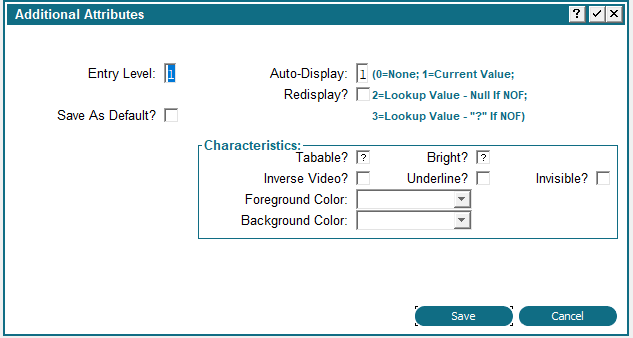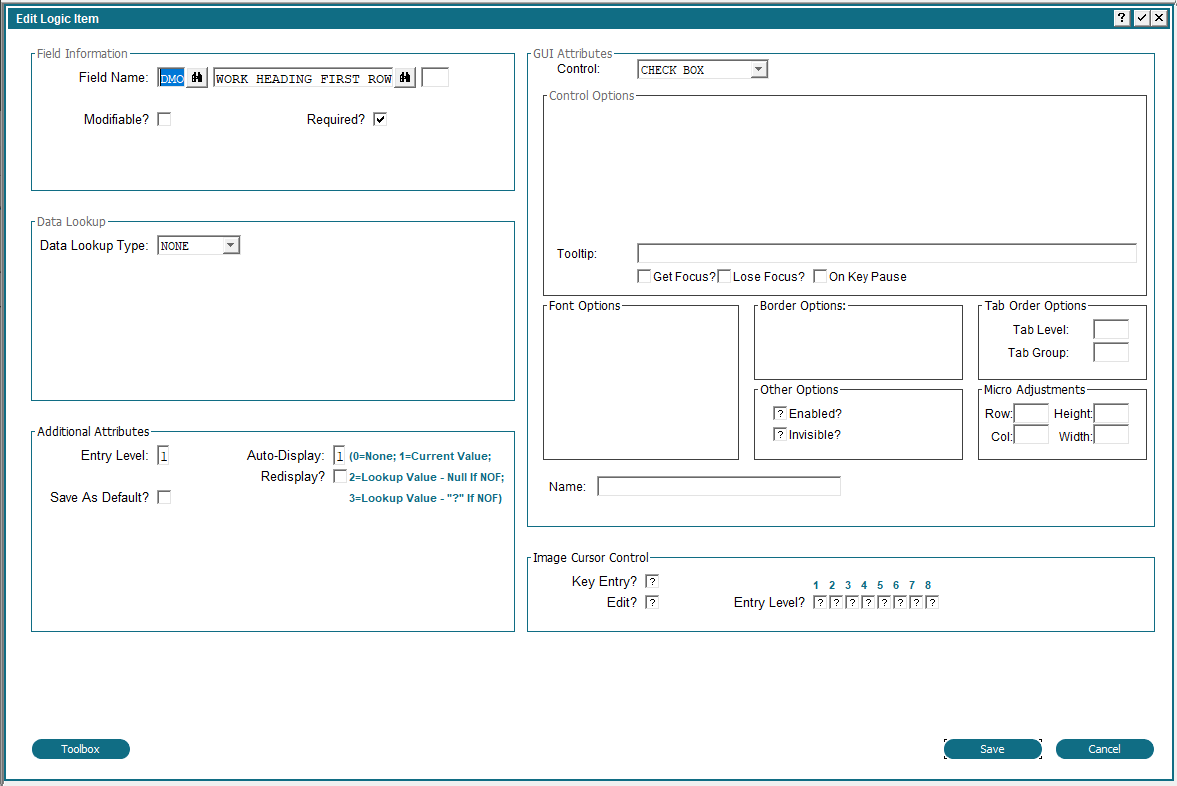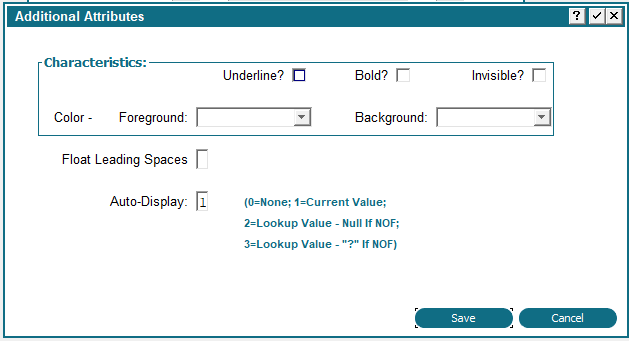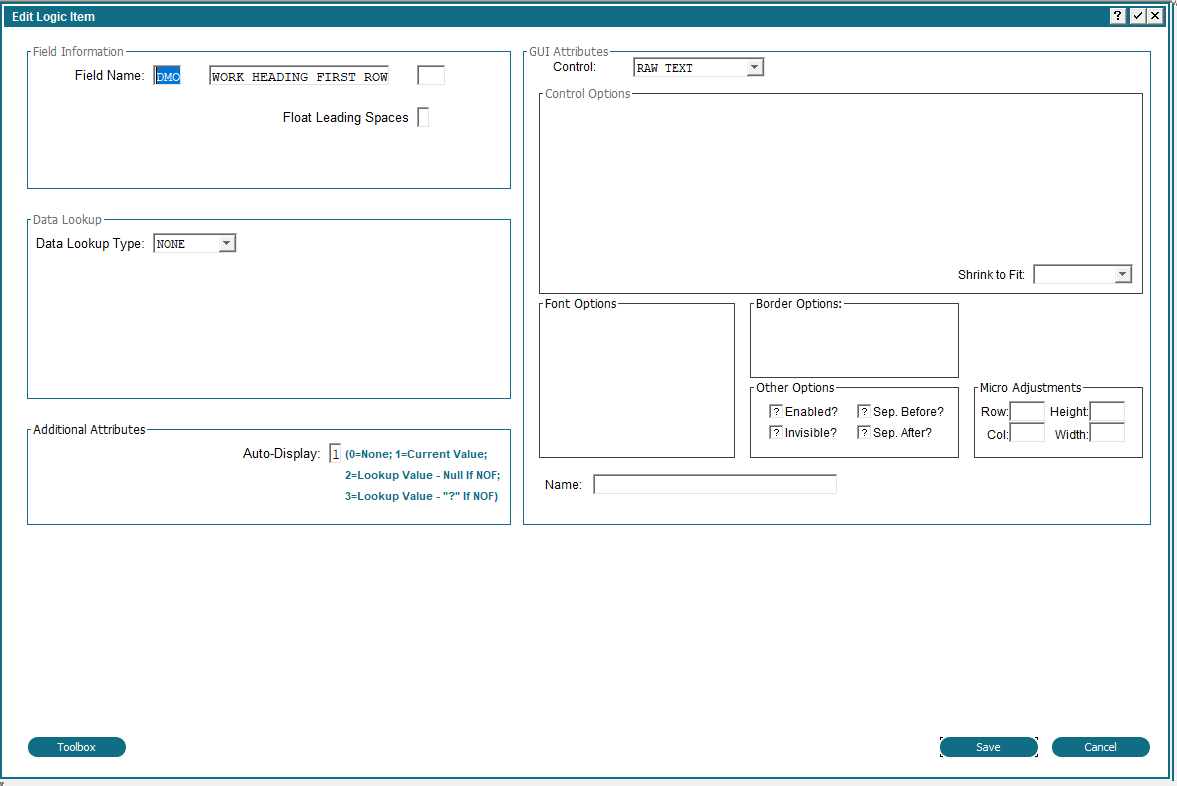Chapter 3-15: Using the Image Editor |
Logic Item Additional Attributes The logic item Additional Attributes overlay screens, shown below, contain specifications that are unique to the appearance of an logic field painted as an item on an image. The options that follow are a composite of those you see when defining Logic items for frames in input, output, and inquiry processes. If an option only displays for a specific type of process, the definition indicates so. Logic Input Additional Attributes Overlay Logic Input Additional Attributes with GUI Overlay Logic Output Additional Attributes Overlay Logic Output Additional Attributes with GUI Overlay Logic item Additional Attributes overlays contain some or all of the following fields, which may be common to date/time, numeric, and End of Range Additional Attributes overlays, as well. Auto-Display indicates whether or not the value in this item automatically displays and, if so, both the source of the value and the action to be taken if the information is not on file. The Auto-Display options are: 0 = None. The value for this item will not automatically display. Its appearance is explicitly controlled by the designer with statements. 1 = Current Value. Displays the value of the field in the record currently in memory. 2 = Lookup Value - Null If NOF. Displays the value of the field in the record that is defined in the data lookup. If the information is not on file, the field displays blanks. 3 = Lookup Value - '?' If NOF. Displays the value of the field in the record that is defined in the data lookup. If the information is not on file, the field displays question marks (???). The default is 1. Float Leading Spaces for output and inquiry processes, controls positioning of the item. If nonblank, the position of the item is not absolute. It can move to the left, based on the position of the last character in the preceding item and the number you enter in this specification. An entry of 0 through 9 represents the number of spaces that must appear between this item and the last character of the preceding item. If blank, the item does not float. The default is blank. Please refer to Using GUI Features of the Image Editor for a description of the GUI attributes on this overlay. |
Application Design Manual "Powered by Appx Software"1657 ©2006-2023 By APPX Software, Inc. All Rights Reserved |



